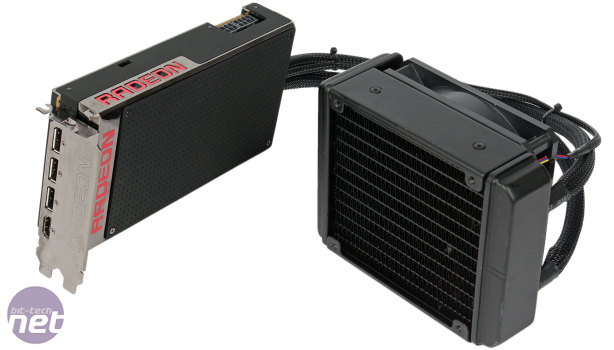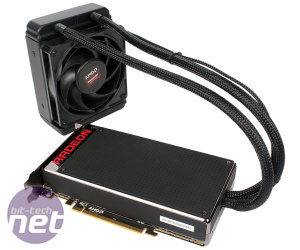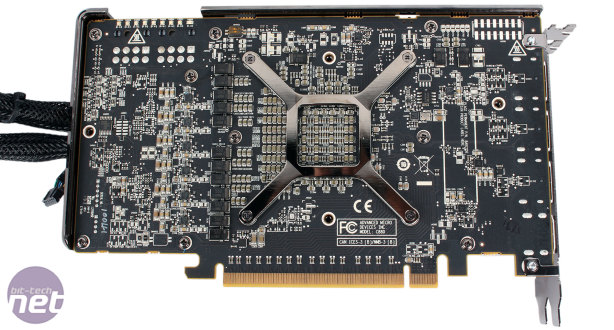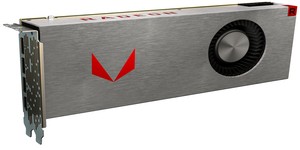
Performance Analysis
The Alien: Isolation results set the tone for what's to come. At 1080p, the Fury X is significantly closer to GTX 980 performance than that of a GTX 980 Ti; in fact their average frame rates are the same. Of course, with a minimum of over 120fps here, you're guaranteed smooth frame rates, but the GTX 980 Ti is more than 20fps faster. At 1440p, Fury X pulls away from the GTX 980, now sitting between the middle of the two Nvidia cards. At 4K, the GTX 980 Ti is still faster, but this time the difference is academic – 1fps on the minimum and 4fps on average.Battlefield 4 shows a similar pattern, with performance close to the GTX 980 at 1080p (well above 60fps minimum), then in between a GTX 980 Ti and GTX 980 at 1440p. At this resolution, it's some way off a 60fps minimum, which the GTX 980 Ti does manage to sustain. At 4K, however, it actually defeats the GTX 980 Ti, although only by 1fps, and is 6fps behind on average.
Crysis 3 appears to be very limited by memory bandwidth, as even at 1080p, it's a bit more ahead of the GTX 980 than we've seen. At 1440p, it's very close to GTX 980 Ti performance, again better than we've seen. Lastly, at 4K, performance is virtually identical, with the GTX 980 Ti just stealing the lead on average by 1fps. The R9 Fury X is the first single-GPU card from AMD we've seen that offers technically playable frame rates in this extremely demanding test.
In another of our new benchmarks, GTA V, the Fury X starts badly, with its minimum dropping to 74fps, leaving even the GTX 980 comfortably ahead. Even at 1440p, it's still only just able to trump the GTX 980. At 4K, it's close to the GTX 980 Ti but again is still behind, with 44fps minimum compared to 47fps for Nvidia.
In Middle Earth, the R9 Fury X comes out stronger, being much closer to the GTX 980 Ti at 1080p and 1440p, though still not ahead. The minimum frame rate of over 60fps in this latter resolution is good to see as well. It surpasses Nvidia's card at 4K, although only by 1fps on average – the minimum frame rates are the same at 43fps.
The Witcher 3, like GTA V, suffers from a low minimum frame rate at 1080p that's beaten by a GTX 980. It sits between the two Nvidia cards at 1440p, but again we see the GTX 980 Ti hitting a consistent 60fps where the Fury X cannot. At 4K, the Fury X does get a win, but again it's very small and would be imperceptible.
Going by the all-important minimum frame rates, the GTX 980 Ti defeats the R9 Fury X by 18 percent on average at 1080p, and by 11 percent at 1440p. However, the difference between the two cards is less than one percent at 4K, though still in the GTX 980 Ti's favour. Meanwhile, AMD's new flagship is, on average, 23 percent faster than the R9 290X at 1080p, 30 percent at 1440p and 36 percent at 4K. We see a similar pattern in the Unigine Valley benchmark, where the new flagship defeats the older one by 27 percent at 1080p and 34 percent when you crank up the pixels to 2,560 x 1,440.
Power consumption for the Fury X is higher than any other card, but it's definitely not as high as many would have been expecting from a scaled-up R9 290X. In fact, the R9 Fury X has a total system power consumption of 445W, which is only about 25W more than a GTX 980 Ti or third-party R9 290X (at reference clocks). AMD has clearly made some significant efficiency gains in Fiji. Remember, the GTX 980 Ti with its Maxwell architecture is considered very efficient, and Fury X's power consumption is only slightly more even though it has a pump to power and they perform very similarly, at least at 4K – at lower resolutions, it's not as efficient.
Thermally, the R9 Fury X excels as well, with the delta T of 36°C (in a closed case) being a fair bit cooler than an R9 290X with a massive third-party cooler strapped to it, and significantly cooler than a GTX 980 or GTX 980 Ti. A laser thermometer told as that both the back of the card and the radiator reached about 55°C at most. It's also quieter; the fan noise was practically inaudible throughout testing, never going above 22 percent and actually settling at just 15 percent (the lowest possible) under sustained load. Pump noise is the more audible aspect, and we did occasionally hear slight coil whine too, although not enough in either case to be distracting or annoying.
The overclocking results are rather disappointing; we only managed to squeeze between 2 and 5 percent more from the card. This is in comparison to our GTX 980 Ti, where we saw gains of around 20 percent. The main thermal and electrical limits to overclocking may have been lifted, but the GPU itself seems to be the limiting factor. It may excel under liquid nitrogen, but that's only relevant to a very small community. Power consumption went up by roughly 20W when overclocked; temperatures and noise were unchanged.

MSI MPG Velox 100R Chassis Review
October 14 2021 | 15:04












Want to comment? Please log in.